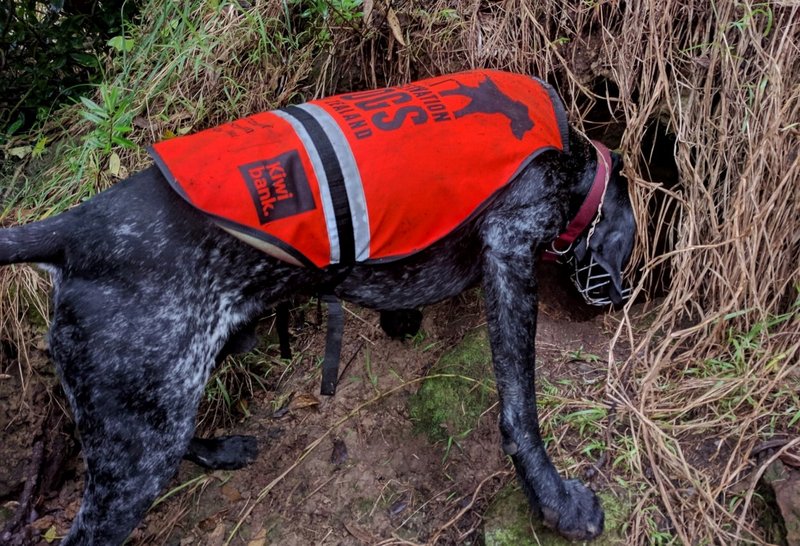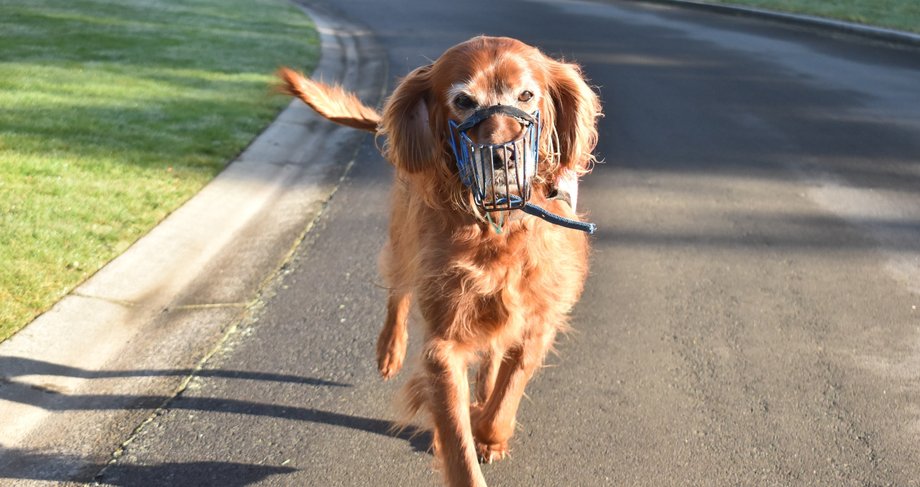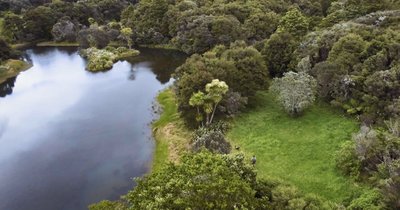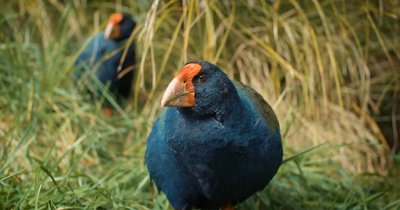Over the last year, Kiwibank has been partnering with the Department of Conservation on the Conservation Dogs Programme. While New Zealand is a world leader in using working dogs to protect our endangered species and plants, it’s a global movement that puts man’s best friend at the heart of environmental protection efforts all over the world.
Not New In New Zealand
New Zealand has been using conservation dogs since the 1890s when our first conservation officer, Richard Henry, employed a dog to detect kākāpō and kiwi. Today our well-trained dogs are used to help monitor protected species and help protect our land from introduced pests.
The Conservation Dog Programme certifies dogs in two categories.
- Protected Species Dogs are used to find and monitor target species such as kiwi, whio, takahē, petrels and more.
- Pest Detection Dogs, like the name implies, search for introduced pests like rats, stoats, weasels and ferrets.
Once accepted into the Conservation Dogs Programme, the dogs and handlers undergo a two-stage certification process, an interim assessment that focuses on foundation skills such as command and control and general obedience, and a full assessment that ensures the dogs are able to successfully identify and track their target species.
As for handlers, they are required to demonstrate adequate knowledge of their dogs and their target species. Right now, we have 84 dog-handler teams who all play a vital role in New Zealand’s ongoing efforts to protect its natural heritage.
Fifty-three of these dogs are trained to find protected species, while 31 of them are trained to sniff out pests.
We’ve built up quite the reputation on the world stage: our dogs have been to Australia and Japan to find feral cats and rodents, and even mongoose!
The Nose Knows
Well, they don’t call them ‘man’s best friend’ for nothing. Dogs have helped humans for ages, from herding and protecting livestock, to hunting game, leading the blind, locating lost people, and sniffing out drugs. They’re good at all of these jobs thanks to their sniffing skills.
Dogs are incredible scenting machines – the majority of their brains and noses are built to detect and discriminate small quantities of odour, enabling them to pick out single scents among the myriad of others in any environment.
Those fluffy snouts? They aren’t just super cute. They contain up to 220 million olfactory receptor cells, which is rather impressive compared to the human nose’s 5 million receptors.
Dogs are used in conservation programmes all over the world including in the UK, Australia, America, and Africa, just to name a few. Certain dog breeds are better suited to this work and the Conservation Dogs Programme uses breeds such as pointers and Labradors for protected species work and terriers for pest detection.
Selection comes down to the dogs’ individual behavior, such as an obsessive focus, ability to ignore distractions, and a willingness to listen to a handler.
In America, through The Conservation Canines program at the University of Washington, they’ve been transforming stray dogs into detectives since 1997. And the species these dogs are sniffing out in Canadian forests to Australian outback are a lot more dangerous than New Zealand’s – these pups are hot on the trails of wolves, moose, cheetah and more!
Doggone! How Do They Do It?
Dogs are trained to detect species in low numbers (such as an invading pest on a pest-free island) and excel at finding target odours from protected or endangered species. Training isn’t easy and comes at a high cost to the programme and the handlers themselves. Every team has their own way of training their dogs, but here in New Zealand, the Conservation Dog Programme dog handler Andrew Glaser uses tactile training.
“I use my hands to show the dogs they’re doing a good job. Some people use treats and food, but I find that a pat and a scratch are all a dog needs to know that they’re doing great work.”
And sniffing out protected or endangered animals or pests is just the tip of the iceberg. Overseas, well trained detection dogs can also track down poachers and their products –like ivory or shark fins – in the wild, at airports, shipping ports, and border crossings. They also put their protective nature to good use in guarding endangered species. For instance, the Cheetah Conservation Fund in Namibia has a Livestock Guarding Dog Programme.
They train Anatolian shepherd and Kangal dogs and place them with local ranchers to keep predators like cheetahs, lions and leopards safe.
This helps reduce the conflict between the big cats and ranchers, minimising snaring or retaliatory killing.
New Zealand may have been the first country to unleash the potential of dogs to protect our environment, but it’s become a successful conservation strategy all over the world.
The Conservation Dogs and their talented handlers are active all over New Zealand. You might be lucky enough to meet them at wharfs, ferry terminals, island and mainland sanctuaries, in the national parks or perhaps even at your local Kiwibank branch so keep an eye out when you're exploring our backyard! A huge thanks to Andrew for sharing his great photos.
Want to find out more? Stay up to date with the programme by visiting the Dog Programme section on DOC's website or check out Kiwibank’s social media channels.




